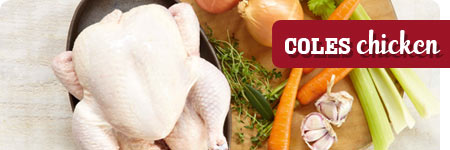After whole-wheat banana bread for breakfast along with fruit, and a lunch of grilled lake perch and salad, the New Year was ushered in with something a little heavier – roast duck.
The year of the (temperature verified) duck?
I never know what the future holds but can tell you what we’ve been doing.
 bites.ksu.edu and barfblog.com are complimentary and comprehensive resources for those interested in microbial food safety – the things that make people barf.
bites.ksu.edu and barfblog.com are complimentary and comprehensive resources for those interested in microbial food safety – the things that make people barf.
Too many people get sick each year from the food and water they consume. bites-l and barfblog.com are designed to inform and engage people in dialogue about food-related risks, controls and benefits, from farm-to-fork.
For rapid, relevant and reliable food safety news, subscribe to barfblog.com and follow us on twitter and facebook; for a daily, or twice-daily summary, including barfblog.com posts, subscribe to bites-l at bites.ksu.edu.
In 2011, there were:
• 482 bites-l posts;
• 4,817 bites-l articles posted;
• 6,760 bites-l (direct) subscribers in 61 countries;
• 1,186 barfblog.com posts;
• 279,000 barfblog.com hits (and many more);
• 21 food safety infosheets;
• 1 food safety video; and,
• 17 outbreak tables.
The articles collected have become much more focused due to improved Internet search capabilities, resulting in significant savings in research expenditures. Further, while the number of subscribers has remained steady, there are daily fluctuations in the bites-l list, with approximately 3 subscribers deleted and 3 added. This listserve activity keeps bites-l subscription list current and focused on the international food safety community – in 61 countries.
In 2010, a Food Safety Infosheets rapid review team was created to provide expert comment on factual material and includes: Dr. Trevor Phister (N.C. State), Dr. Don Schaffner (Rutgers University), Dr. Renee Boyer (Virginia Tech) and Dr. Michelle Danyluk (University of Florida).
All inforsheets are currently translated into Spanish (by MPH student Gonzalo Erdozain) and French (by France-based colleague Albert Amgar and Dr. Amy Hubbell).
In 2011, 20 peer-reviewed food safety infosheets were distributed to 455 direct subscribers (including 145 extension agents in 8 states), 6,760 bites listerv subscribers, 723 direct barfblog.com subscribers. Additionally, three direct subscribers were known to send infosheets to all of their organization’s outlets—a total of 1,350 sites and 300 support associates (an estimated 15,000 food handlers would have received these publications.
Video production has declined because of the high resource cost and need to focus activities. bites-l and barfblog.com will continue to focus on content and efficient, rapid, mass-distribution mechanisms.
 Publications
Publications
1 book chapter
6 papers published
7 papers accepted/in press/submitted
Powell, D.A. 2011. Food safety, genetically engineered foods and perception in Comprehensive Biotechnology, Second Edition, Moo-Young M, (ed.) Elsevier p. 769-773.
Powell, D.A., Jacob, C.J., and Chapman, B.J. 2011. Blogs, infosheets and new media as academic scholarship in food safety research, education, and extension. Innovative Higher Education, published on-line ahead of print, DOI: 10.1007/s10755-011-9207-
Fillion, K., Powell, D. 2011. Designing a national restaurant inspection disclosure system for New Zealand. Journal of Food Protection, 74(11), 1869-1874.
Filion, K., KuKanich, K. S., Chapman, B., Hardigree, M. K., & Powell, D. A. 2011. Observation-based evaluation of hand hygiene practices and the effects of an intervention at a public hospital cafeteria. American Journal of Infection Control, 39(6), 464-470.
Wilson, S., Chapman, B, Powell, D.A. 2011. Understanding food safety information needs: using an information service as a research tool. Food Protection Trends 31:437-445.
Wilson, S.M., Jacob, C.J. and Powell, D.A. 2011. Behavior-change interventions to improve hand hygiene practice: A review. Critical Public Health 21(1): 119-127.
Powell, D.A., Jacob, C.J., and Chapman, B.J. 2011. Enhancing food safety culture to reduce rates of foodborne illness. Food Control, 22(6): 817-822.
 needed to come up with something different.
needed to come up with something different. become the hub of all our food safety and child rearing activities.
become the hub of all our food safety and child rearing activities.


 We have been preparing a new site, with new software, over the summer, but it isn’t ready yet.
We have been preparing a new site, with new software, over the summer, but it isn’t ready yet. bites.ksu.edu
bites.ksu.edu Publications
Publications  Saturday Night).
Saturday Night)..jpg) and food service operators should not serve them. The cantaloupes, grown in and shipped from Del Monte Fresh’s farm Asuncion Mita in Guatemala, have a light brown color skin on the exterior with orange flesh. The recalled cartons of cantaloupes are dark brown cardboard with the “Del Monte” logo in red lettering and “cantaloupes” in yellow lettering on a green background. The cantaloupes have the lot codes: 02-15-24-10, 02-15-25-10, 02-15-26-10 and 02-15-28-10. No illness has been linked to cantaloupes from other sources.
and food service operators should not serve them. The cantaloupes, grown in and shipped from Del Monte Fresh’s farm Asuncion Mita in Guatemala, have a light brown color skin on the exterior with orange flesh. The recalled cartons of cantaloupes are dark brown cardboard with the “Del Monte” logo in red lettering and “cantaloupes” in yellow lettering on a green background. The cantaloupes have the lot codes: 02-15-24-10, 02-15-25-10, 02-15-26-10 and 02-15-28-10. No illness has been linked to cantaloupes from other sources. 
 controls and benefits, from farm-to-fork.
controls and benefits, from farm-to-fork. illness outbreak; discussion of background knowledge of a pathogen (including symptoms, etiology and transmission); food handler control practices; and emerging food safety issues. Food safety infosheets also contain evidence-based prescriptive information to prevent or mitigate foodborne illness related to food handling.
illness outbreak; discussion of background knowledge of a pathogen (including symptoms, etiology and transmission); food handler control practices; and emerging food safety issues. Food safety infosheets also contain evidence-based prescriptive information to prevent or mitigate foodborne illness related to food handling..jpg) book. His cv is available at
book. His cv is available at .jpg) opinions on current food safety issues. Opinions must be reliable – with references — rapid and relevant.
opinions on current food safety issues. Opinions must be reliable – with references — rapid and relevant. condensed into short items or stories that make up the daily postings. The listserv has been issued continuously since 1994 and is distributed daily via e-mail to thousands of individuals worldwide from academia, industry, government, the farm community, journalists and the public at large.
condensed into short items or stories that make up the daily postings. The listserv has been issued continuously since 1994 and is distributed daily via e-mail to thousands of individuals worldwide from academia, industry, government, the farm community, journalists and the public at large. bites.ksu.edu
bites.ksu.edu